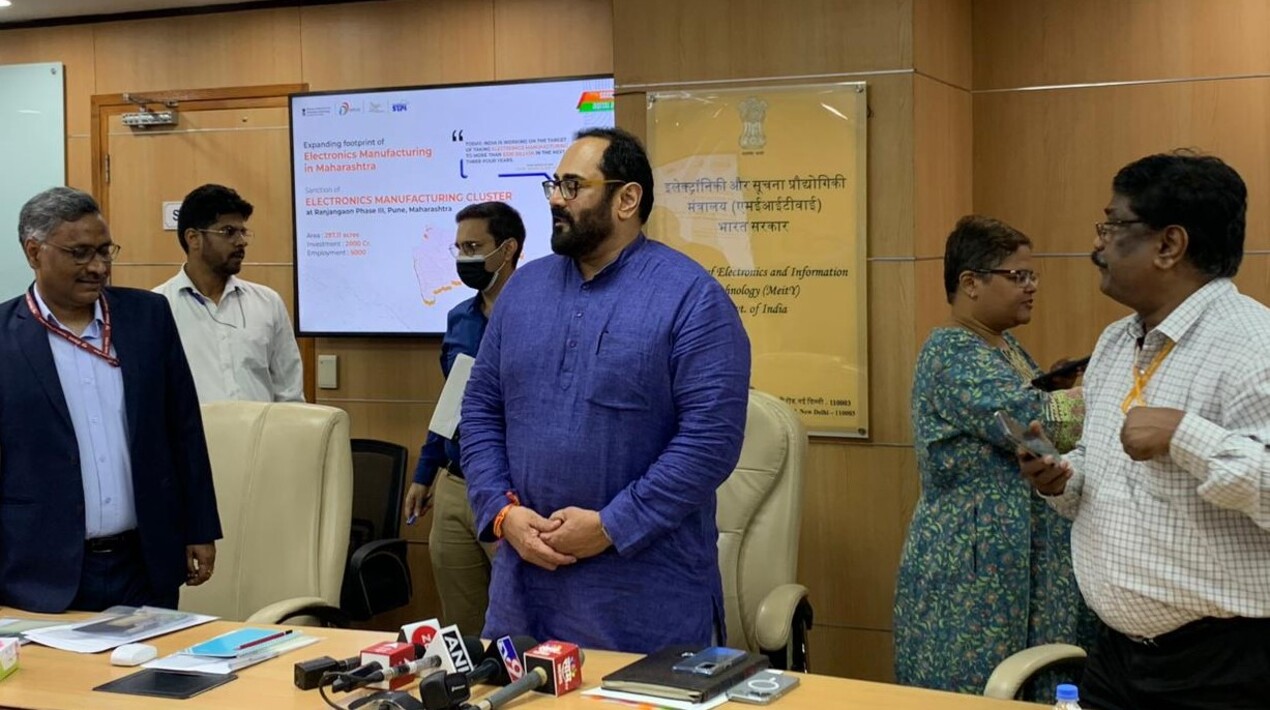
To strengthen the country’s electronics manufacturing ecosystem, the Ministry of Electronics and Information Technology (MeitY) is setting up a greenfield Electronics Manufacturing Cluster (EMC) in Ranjangaon Phase III, near Pune city in the state of Maharashtra. The project will cost a total of IN 4.9 billion (US $59.3 million) and will catalyse investments to the tune of over IN 20 billion (US $242 million) in the future. It is also forecast to generate employment for over 5,000 people.
The MietY Minister, Rajeev Chandrasekhar, recently made the announcement. He noted that the country already has EMCs in Noida, Tirupati, Karnataka, and Tamil Nadu – wherein both multi-national companies and Indian startups have set up their units. The government is the enabling partner in these EMCs and working in tandem with the state governments to make the EMCs a catalyst for electronics manufacturing in the state, he added.
The Minister also announced that MeitY plans to boost the 1,000 Crore Semicon India Future Design programme to support semiconductor design startups in the state. It will also soon visit Maharashtra for a roadshow. He said that the Centre for Development of Advanced Computing (C-DAC) in Pune will be the nodal office for this purpose.
The approval for the EMC was given to the Maharashtra Industrial Development Corporation (MIDC) and the state government’s State Industrial Agency. The Minister said that after the pandemic, it has become very competitive for the countries/states to corner the opportunities that have sprung up following disruptions in global value chains and supply chains.
Electronics manufacturing has seen an exponential rise since 2014, the Minister claimed. In 2014, 92% of all mobile phones used by Indian customers were imported. Now, 97% of all mobile phones used by Indian customers are domestically manufactured. The country had zero exports in the electronics manufacturing space in 2014, at present, India exports equipment worth IN 700 billion (US$ 8.7 billion).
Citing the example of EMC at Tirupati, the Minister noted that the EMCs will prove to be the pivot points around which the electronics manufacturing and design ecosystem will flourish. It will take India towards its target of US $300 billion in electronics manufacturing by 2025-26, which was announced earlier this year.
In August, MeitY launched a report outlining how India can achieve its electronics manufacturing target and export goals of US$ 120 billion by 2025-26. The report is titled, ‘Globalise to Localise: Exporting at Scale and Deepening the Ecosystem are Vital to Higher Domestic Value Addition’. It was prepared by the India Council for Research on International Economic Relations (ICRIER), in collaboration with the India Cellular and Electronics Association (ICEA).
As OpenGov Asia reported, the government is strengthening India’s domestic manufacturing ecosystem to make it more resilient to supply chain disruptions. The aim is to emerge as a reliable and trusted partner in global value chains.
The report postulates that the country must export aggressively to grow its electronics manufacturing sector. In addition to domestic production and supplies and domestic consumption, exports are an important way to get the scales of the other economies that are competing with the country. Exports will create a network effect of creating supply chain interests and supply chain investments that in turn will increase value addition in the Indian electronics segment.
















